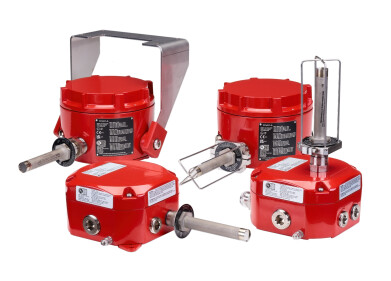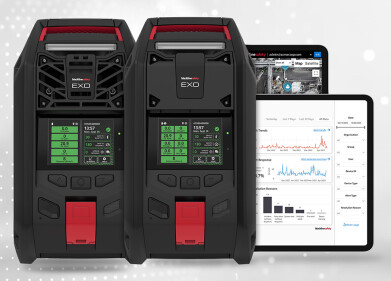Safety
Fast, Reliable Detection of O2, H2S or CO
Feb 16 2010
Draeger (Germany) is expanding its family of single gas detectors with the launch of the Draeger Pac 3500 and Draeger Pac 5500. Designed for personal protection and ideal for use in oil and gas, chemical, power generation, steel, water and other general industrial applications, these compact gas detectors measure the concentration of oxygen, carbon monoxide or hydrogen sulphide in the air. Both instruments use minimal battery power and, because they have low maintenance requirements, offer a low cost of ownership.
The Draeger Pac 3500 has a lifespan of approximately two years and the Draeger Pac 5500 has an indefinite lifespan with proper maintenance and servicing. Both units feature the same powerful Draeger detection technology.
The integrated Draeger XXS sensors offer an expected lifespan of five to eight years. The same is true of the oxygen sensor, which operates consumption-free and has been produced lead-free. The triple electrode technology on which it is based has been patented and prevents early sensor wear. The battery and filter of the Draeger Pac 3500 can be replaced while the sensor does not have to be changed over the complete instrument life. The battery, sensor and filter of the Draeger Pac 5500 can be easily replaced without the need for special tools.
The Draeger Pac 3500 and the Draeger Pac 5500 allow the gas to enter the sensor from several directions. This reduces the risk of an accidentally covered inlet preventing access to the sensor for measurement. The sensors detect the gases quickly and reliably. When used to detect hydrogen sulphide, the instrument indicates measurements with one decimal point and, as a result, is ideal for low warning thresholds and reduced limit values.
Featuring a short response time, both instruments are quick to generate visual, acoustic and vibrating alarms during a hazardous situation.
Used to test instrument function, the Draeger Bump Test Station operates without a power supply. This means that the mandatory daily tests can be carried out on-site and without undue delay to the work process – even when large numbers of instruments are involved. The optional test for each instrument takes eight to fifteen seconds, ensuring quick, easy testing. The userprogrammable bump test and calibration intervals mean that the detectors can be configured to stop automatically after an adjustable tolerance period if the user ignores the request for a bump test. The same applies to the (non-)observance of regular service and calibration intervals in the workshop.
Digital Edition
PIN 25.5 Oct/Nov 2024
November 2024
Analytical Instrumentation - Picturing Viscosity – How Can a Viscometer or a Rheometer Benefit You? - Sustainable Grease Formulations: Evaluating Key Performance Parameters and Testing Method...
View all digital editions
Events
Dec 03 2024 Dusseldorf, Germany
Dec 08 2024 Anaheim, CA, USA
Turkey & Black Sea Oil and Gas
Dec 11 2024 Istanbul, Turkey
Dec 19 2024 Aurangabad, India
Jan 20 2025 San Diego, CA, USA



















